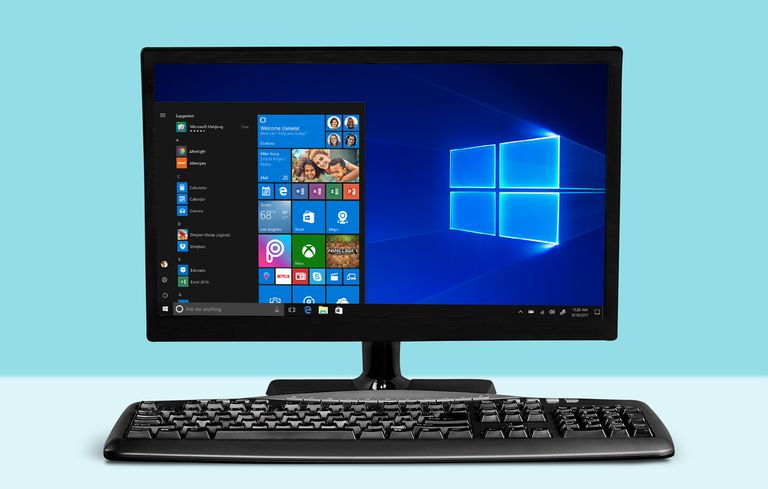Despite the newer and faster updates in every other while that aid in optimized performance of Windows, there comes a time when it rolls back down the slow process and drops you at a lobby, waiting for yet another boost in the system.
A resounding ‘Why’ questions the factors that keep pushing the system to slower activities over and again. Well, there can be many inner-goings like viruses, caches, background apps and even the incompatibility in the system, dulling the Windows and thus, needing a fix.
There are a few hits to be made and tweaks to be chiseled when it comes to breathing motivation into your Windows 10 to start running faster and effectively again. We have summoned the best tips and tricks to increase Windows performance and let go of exhaustion.
So, here we go.
Effective Ways to Increase Windows Performance
There are multiple Let us scroll down the best ways to effectively turn the optimal process on. These tips will contribute to speed up, enhance and optimize the whole set of processes in your Windows PC.
1. Seek a Third-Party Optimization Software
If you are tired of a lazy system process, you can move into third-party software to optimize the performance of your Windows. There is an abundance of optimization software that offers various features meaning to speed up the functionality. You can look for the best PC optimization software to energize your Windows in a tweak of a moment.
2. Uninstall Unwanted Apps
There are various pre-installed apps in the system that you don’t recall even looking at. Some tools and programs that you don’t use only eat up the storage and block the doorway for the useful components. It is time to erase them from your Windows in order to boost the utility of the system.
Here’s how you can do that:
- Go to the Apps section in Settings.
- Now, click on Apps & Features.
- Find and select the apps you don’t use.
- To remove them, hit the Uninstall button.
Note, while you remove any unnecessary app from the desktop, you may need to follow further on-screen instructions to complete the process.
Once you have installed an app, you can seek the same steps again if you have more of such unwanted apps.
3. Disable Startup and Background Apps
Little do you realize that many apps on your computer that launch automatically during startup linger unnecessarily in the background? While you don’t usually indulge in them, they disturb the system and slow down the process.
Follow these steps to disable startup apps:
- Go to Settings and click on Apps.
- Now, Click on Startup and then click the Sort by menu to choose the Startup impact option.
- Next, you can turn off the toggle switch to disable any app that does not involve any important purpose for you.
- Now you can restart your computer.
Now that you have performed these steps, you will notice the faster pace in your device. However, there still are certain apps that run tasks in the background and can distract the speed of your Windows. To improve the performance of the system, you can disable the apps that you don’t want running in the background. To do that:
- Go to Settings and click on the Privacy option.
- Now, you have to select Background Apps.
- In that option, you can turn off the apps that you don’t want to perform functions in the background.
While you are not really using these programs, turning them off with these steps will improve the performance of Windows.
4. Run a Malware Scan
Viruses, adware, and any other suspicious programs feed on your system’s performance by consuming the memory and hard drive and junk it to sluggish performance. However, you can find the antivirus pre-installed in Windows 10 but that does not make viruses any distant from spoiling the storage.
To scan and detect the malware in your device, you can follow these steps:
- Go to Settings and search for the Windows Security section.
- Once you reach the Windows Security page, on the Virus & threat protection option.
- Now, click on the Check for updates option under the Virus & threat protection updates.
- Then, you have to click the Virus & threat protection.
- In the next step, click the Scan options link from the Current threats section.
- Choose the Full scan option and then click the scan now button.
Now that you have completed the steps, the scan should be able spot and remove any malware affecting the functionality.
5. Install the Latest System and Driver Updates
Sometimes, all it takes is installing the latest system and updating drivers to bring the performance of Windows 10 back to life. In fact, not keeping the system and drivers up to date can be the major cause behind slower processes in Windows 10. To install the latest updates on your Windows 10 manually you can seek the Windows Update in the Update & Security section from Settings.
Updating drivers is as essential as installing system updates to accelerate Windows 10 performance. If your Windows is performing tediously then it can be a result of an outdated driver. To ensure the optimal performance, you can update the latest driver with either device manager or any driver updater.
Optimize the Performance of Windows 10
There is a multitude of options to seek when there’s a call to deal with the tired state of Windows PC. Most of the time, it’s just the crumbs that slow down your PC. In order to fix this situation, you can follow these tips. Shoot it in the comment section if you have more of such fixes to boost Windows 10 performance.
Author Bio
Nancy is a writer about technology. She also loves to write about QuickBooks. Nowadays she is working on an article on QuickBooks error 6190. She working on different technologies that give an easier life to human beings in this era.




